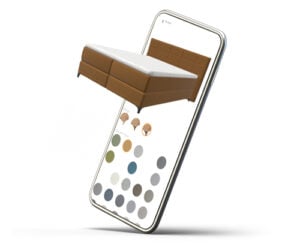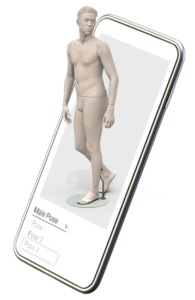Virtual Reality (VR) gives shoppers the feeling of being inside your store or product experience without leaving home. In immersive 3D environments they can explore products from every angle, interact with features, and make confident purchase decisions. For eCommerce teams, that means stronger engagement, higher conversions, and measurable ROI.
What is Virtual Reality in eCommerce?
VR for eCommerce recreates the best parts of in-store shopping in a digital environment. Customers can step into a branded space, browse a curated assortment, and interact with products as if they were physically present. This immersive format reduces uncertainty and helps shoppers understand size, materials, and use cases before they buy.
Want to see how this connects to your stack? Explore our Virtual Reality solution and how it pairs with a 3D product configurator for a seamless product experience.
Key Virtual Reality benefits in eCommerce
VR isn’t just a novelty, it delivers concrete business value throughout the funnel. The most important benefits include:
- Deeper product understanding: customers inspect details and features in a lifelike environment.
- Higher purchase confidence: immersive demos and fitting experiences reduce doubt before checkout.
- Engagement that lasts: rich storytelling and interactive spaces keep visitors on site longer.
- Differentiation: branded VR showrooms set your experience apart from competitors.
- Insight-driven optimization: VR interactions reveal what customers explore and prefer.
Immersive product demonstrations & virtual fitting rooms
VR excels when products benefit from hands-on exploration. Shoppers can walk around items, zoom into materials, and activate features to see how something really works. Apparel and accessories can go a step further with virtual fitting experiences that help customers assess style and confidence before they buy, lowering hesitation and post-purchase surprises.
For configurable products, combine VR with a 3D configurator. Customers personalize colors, finishes, and options first, then view that exact configuration in an immersive VR space to validate their choice.
Virtual Reality showrooms that elevate engagement
Virtual showrooms bring the store to the shopper. Launch collections in a branded environment, guide visitors through curated journeys, and highlight hero products with interactive hotspots. Sales teams can even host assisted sessions to answer questions inside the VR experience, turning discovery into conversion in one flow.
This format is ideal for drops and seasonal campaigns: update the assortment, refresh scenes, and keep the experience aligned with your merchandising calendar.
Customization, social shopping & guided experiences
Let customers configure products in VR, think materials, modules, or accessories, and instantly see the impact on look and use. Add guided tours for first-time visitors, or collaborative sessions where friends explore together, compare options, and make choices in real time. These social and guided elements increase confidence and reduce friction at the moment of decision.
Data & Analytics: From interaction to insight
Every interaction in VR, what shoppers look at, which variants they explore, where they spend time, is a valuable signal. Use these insights to refine product assortments, prioritize best-performing variants, and optimize content placement inside your virtual showroom. Feedback modules within the experience help you capture qualitative input and remove blockers quickly.
Impact on KPIs: Conversion, AOV & returns
VR impacts the metrics that matter most to eCommerce teams. Clearer product understanding supports higher conversion rates; immersive comparison and configuration naturally lift average order value; and accurate expectations reduce returns. Because VR sessions are highly engaging, you also benefit from stronger brand recall and repeat visits over time.
Use cases across industries
Furniture & Home: place large items in life-like scenes, compare sizes, and evaluate materials to reduce returns.
Fashion & Accessories: tell the story behind new collections, pair items, and support buyers with virtual fittings.
Sports & Equipment: demonstrate features, safety, and accessories in action to build trust before purchase.
Retail & Showrooms: launch new assortments, run immersive campaigns, and host live guided sessions online.
Explore more applications in our industry overview and see outcomes in our customer cases.

Implementation: From pilot to scale
Start with products that have high traffic, complex choices, or elevated return rates. Ensure the experience is mobile-friendly, loads quickly, and is clearly promoted on product pages and category hubs. Connect VR with your configurator and commerce systems so pricing, variants, and availability stay in sync. As you learn what resonates, expand to additional categories and campaigns.
Best Practices for a frictionless VR experience
Focus on asset quality (clean geometry, realistic materials), intuitive navigation, and clear calls-to-action to continue the journey into cart and checkout. Keep scenes purposeful: fewer, stronger hotspots beat cluttered interfaces. Measure what matters and iterate quickly, treat VR as a living space that evolves with your merchandising and content calendar.
Conclusion on Virtual Reality
VR brings your brand, store, and products to life in a way traditional content can’t. It builds confidence, accelerates decisions, and drives measurable results across conversion, AOV, and returns. Combined with a 3D configurator, it forms a powerful end-to-end product experience that delights shoppers and delivers growth.
Ready to explore what VR can do for your business?
